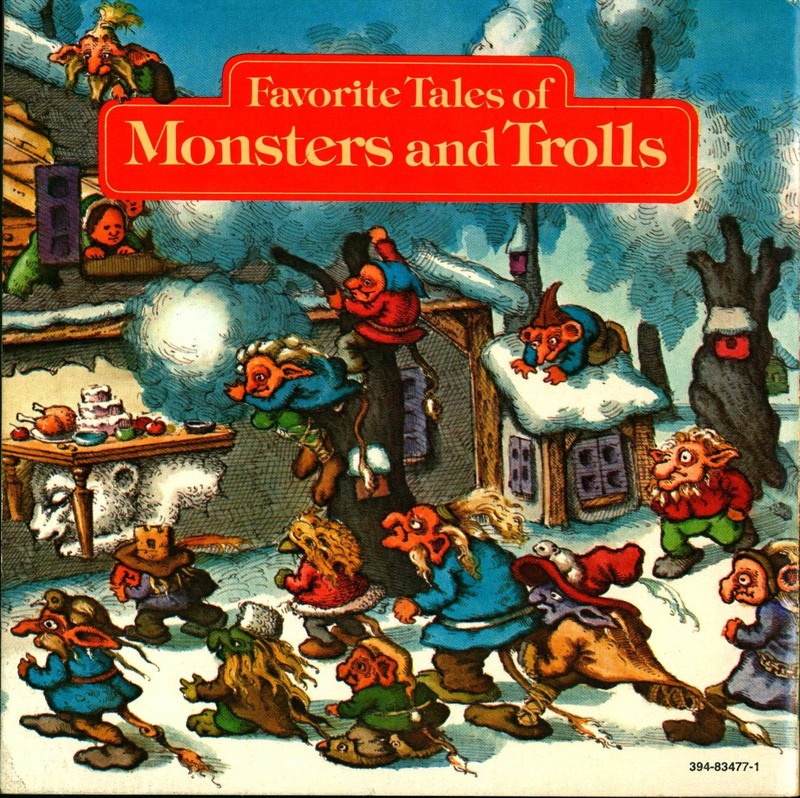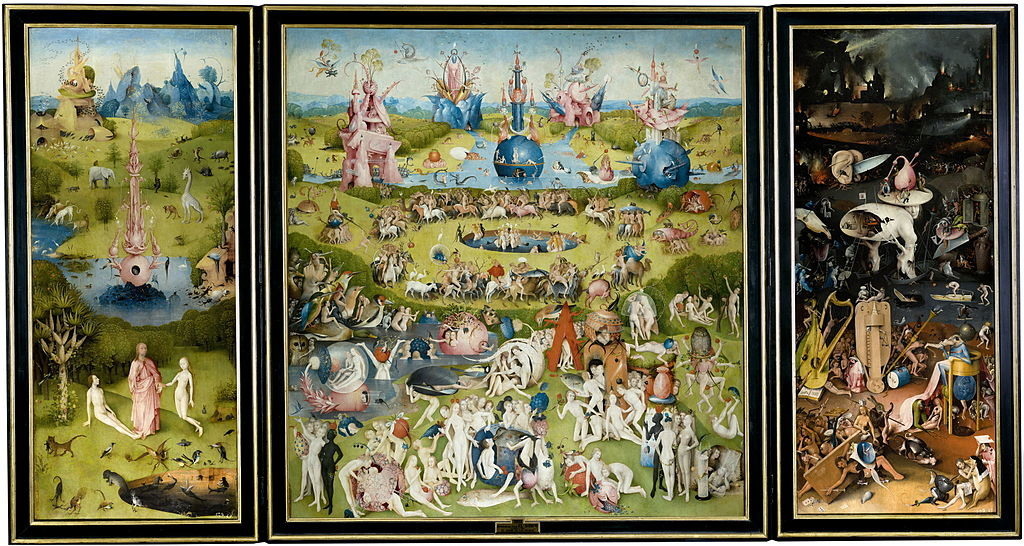
If you want to create a bestselling children’s book that will routinely receive five-star reviews on Goodreads 40 years after its first publication, the key is to draw it in the style of Hieronymus Bosch.
It may seem counter-intuitive to mimic the hellscapes and grotesqueries of such paintings as The Garden of Earthly Delights or The Last Judgment for a children’s book, but the plan sure worked for John O’Brien. He’s the illustrator behind Favorite Tales of Monsters and Trolls, a 32-page picture book first published in 1977 by Random House. To this day, nostalgic readers still go online to enthuse about it.

Monsters and Trolls recounts three popular Scandinavian folk stories featuring trolls. Undoubtedly the most well-known is the opener, “The Three Billy Goats Gruff,” but what sets this telling apart are O’Brien’s fantastic illustrations: here the troll is an anthropomorphic toad who keeps prisoners in his stovepipe hat, including an odd bird-of-paradise he’s chosen for a pet. Both goats and troll must step carefully to avoid treading on gnomes, kiwi birds, and even stranger dwellers of the baroque Wonderland they inhabit.
“You just have all of these little creatures and peoples, communities of fairy folk occupying every corner of the pages,” says the writer Robert Lamb, who grew up with the book and today reads it to his son. “As an adult, I dig the Bosch and Breughel elements in the illustrations, but at the time it was just the richness of the visual world.”
“Oh yeah, for sure,” says O’Brien when asked if the busy and bizarre scenes of Monsters and Trolls were explicitly drawn in the styles of Bosch and Breughel the Elder. “I was really into those Dutch painters at the time.”

Monsters and Trolls was O’Brien’s first book out of art school. After graduating from the Philadelphia College of Art, O’Brien began shopping his portfolio to New York publishers. He eventually wound up meeting with the famed children’s book publisher Ole Risom. Risom was from Denmark and had worked in publishing in Sweden before immigrating to the U.S. As a vice president in Random House’s children’s division, he mentioned to O’Brien that he’d…
The post Decoding the Success of a Picture Book About Monsters and Trolls appeared first on FeedBox.